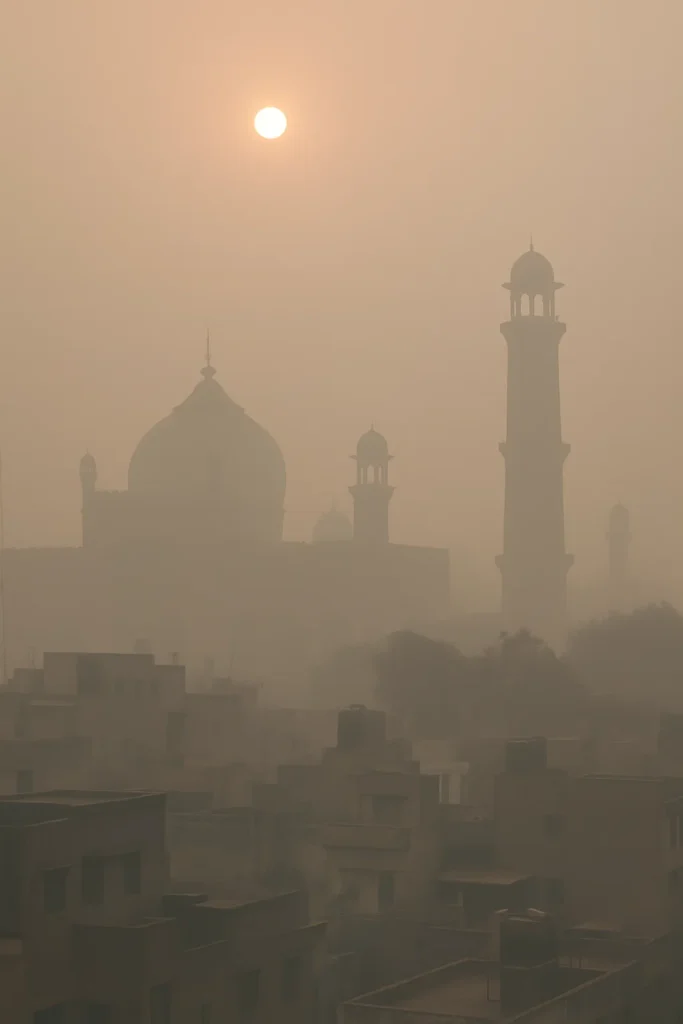
Lahore, one of Pakistan’s largest and busiest cities, has been facing serious air pollution for over a decade. What used to be a city of gardens and clear skies is now known for its thick winter smog.
When Did Smog Become a Problem?
Smog in Lahore became a major issue in the early 2010s. By 2016, it had reached dangerous levels, especially during the winter months (October to January). The air becomes so polluted that people are advised to stay indoors, and schools often shut down.
What Causes the Smog?
- Vehicle Emissions: Thousands of cars, trucks, and buses release dirty smoke into the air.
- Factories and Brick Kilns: Many use cheap, polluting fuels.
- Crop Burning: Farmers burn leftover crops in nearby areas, creating smoke that mixes with city pollution.
- Weather: In winter, cold air traps pollution close to the ground, making it worse.
How Bad Is It?
Lahore often ranks among the world’s most polluted cities. The Air Quality Index (AQI) can rise above 300, which is considered hazardous. Breathing in this air can cause health problems like asthma, coughing, and eye irritation.
What Has Been Done?
The government has taken some steps:
- Shutting down old brick kilns.
- Banning crop burning.
- Issuing air pollution warnings.
- Encouraging cleaner fuels and transport.
However, the problem continues because of weak enforcement and lack of long-term planning.
